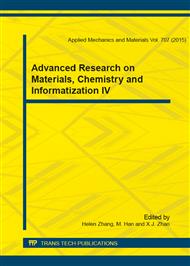p.480
p.487
p.493
p.497
p.501
p.505
p.509
p.514
p.520
Applied-Information Technology in Multi-Agent Simulation in Securities Market Modeling
Abstract:
Multi-agent simulation could make a contribution to a better understanding of social and economic systems. To some extent, multi-agent simulation can be seen as experimental technique for hypothesis testing and scenario analysis, which can be used complementary and in combination with experiments in social and economic systems. The multi-agent model represent a broad class of models which have been introduced to describe the economic dynamics in a more realistic way. Their building blocks are: the agents are heterogeneous with respect to their various properties like strategies, wealth, time scale,etc; the interaction between them is a fundamental element and, of course, it can have many different characteristics; price dynamics depends on the balance between offer and demand but the specific implementation can be different. In the framework of applied-information technology of microscopic simulation, a multi-agent model of the stock exchange is developed for the case of one type of shares.
Info:
Periodical:
Pages:
501-504
Citation:
Online since:
December 2014
Authors:
Price:
Сopyright:
© 2015 Trans Tech Publications Ltd. All Rights Reserved
Share:
Citation:


